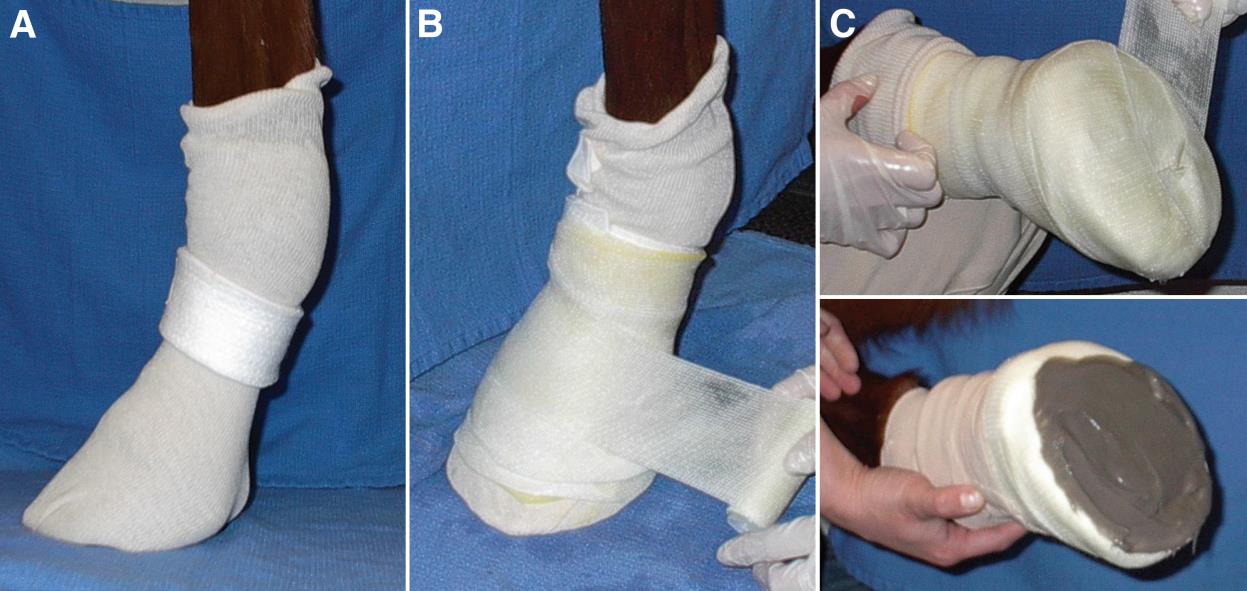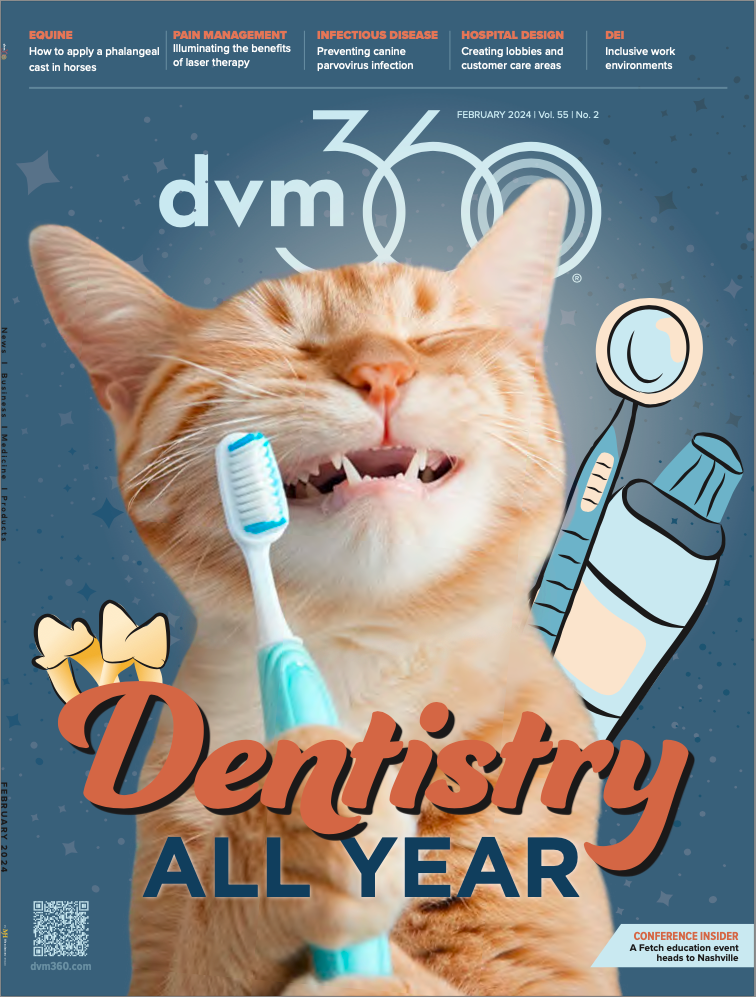How to apply a phalangeal cast in horses
An equine veterinarian outlines an effective treatment for stabilizing a wounded pastern or foot region
Applying a phalangeal (foot) cast is a treatment commonly used for distal limb wounds of the pastern and the foot of horses. The foot cast provides more stability than bandages. Often foot casts have been used in previously nonhealing wounds of the heel bulb region that were treated with bandages. Additionally, the foot cast is often less expensive than bandaging over time. Data from a published study with 50 cases of distal limb wounds of horses treated with a phalangeal cast showed a good prognosis for soundness (89.4%) and cosmetic healing (89.5%).1
Typically, horses are sedated, and a local nerve block (basi sesamoid) is performed for evaluation and treatment of the wound. In the studied cases, wound therapy consisted of wound debridement, lavage of the wound, wound closure (57%), cast application, and antibiotics (84%). Wounds with synovial structure involvement had additional treatment consisting of lavage of the synovial structure and local antibiotic administration via direct injection or regional limb perfusion. Continued local antibiotic therapy is important in these cases and may be administered by an intrasynovial catheter under the cast or sequential regional limb perfusions above the foot cast.1
After the wounds had been repaired, a simple bandage consisting of a nonad- herent dressing (Telfa pad) and specialist cast padding was applied over the site. A stockinette was rolled to the level of the fetlock and doubled over. Orthopedic cast felt was placed just below the fetlock and white tape applied to hold the felt in place (Figure 1A). Orthopedic cast felt can also be placed over the coronary band if needed. At this time the sedation was adjusted to ensure minimal movement during the next 5 to 10 minutes while the cast was setting. Next, a 3-in cast liner was applied with care to ensure no wrinkles above the coronary band. This was followed by 3-in casting tape, making sure it was applied evenly.
Figures 1A, 1B, 1C, and 1D

The casting tape was started at least 1 in below the top of the orthopedic felt at the top of the pastern. Then the casting tape was applied with even pressure overlapping by 50%, again ensuring there were no wrinkles above the coronary band (Figure 1B). Wetting the casting tape with cooler water slowed cast tape setting and provided a longer time for application. The distal limb was elevated to incorporate the casting tape on the bottom of the foot (Figure 1C). Finally, polymethyl methacrylate was added to the bottom of the foot to prevent it from wearing through the cast (Figure 1D). The top of the stockinette was cut, pulled tight, and taped to the top of the cast. The bottom of the cast was covered with elastic tape or rubber and elastic tape to prevent slipping. Elastic tape was used to seal the top to prevent bedding from getting between the cast and the wound.
Horses must be on strict stall rest while wearing a cast to prevent severe rub sores from forming. The top of the cast should be monitored daily for rub sores and the horse for lameness. If the rub sores start to penetrate the skin or increased lameness occurs, the cast should be removed. After cast removal, the previous wound site can be evaluated and treated and, if necessary, a foot cast can be reapplied.
Figures 2A, 2B, and 2C

In the study, there was no difference in outcome between horses that were treated in under 24 hours and those treated after more than 24 hours. Although the numbers were small, the 8 cases with wounds involving synovial structures did not have a significantly different outcome. (Figures 2A, 2B, and 2C). Wounds typically needed a minimum of 3 weeks of stabilization in a phalangeal cast, but some wounds required up to 8 weeks to heal. The foot casts were well tolerated and proved to be an effective treatment by stabilizing wounds involving the pastern and foot region.
Reference
1. Ketzner KM, Stewart AA, Byron CR, et al. Wounds of the pastern and foot region managed with phalangeal casts: 50 cases in 49 horses (1995-2006). Aust Vet J. 2009;87(9)363-368. doi:10.1111/j.1751-0813.2009.00471.x
Allison A. Stewart, DVM, MS, DACVS, is a board-certified equine surgeon at Tennessee Equine Hospital, based in West Thompson’s Station. She enjoys furthering her knowledge in equine surgery. Retrospective evaluation of her cases has helped contribute to this knowledge base. Where her findings have contributed to a change or advancement in a procedure, she has felt it important to present the information. She has done this in abstracts, publications, and speaking when she feels it is a relevant contribution to veterinary medicine and surgery. In her spare time, she enjoys running, skiing, and horseback riding.
